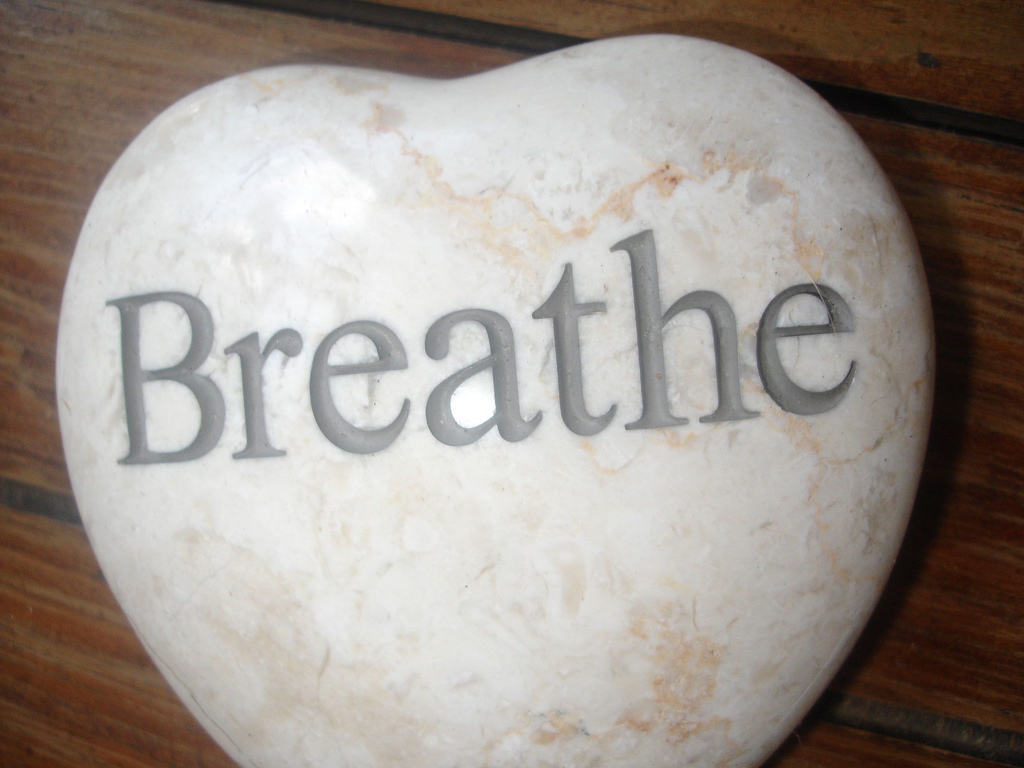 Photo by Shawn Rossi licensed under CC BY 2.0
Photo by Shawn Rossi licensed under CC BY 2.0
3 ways to create space when presenting
Engaging an audience is a balancing act of many things. You must educate and entertain. You must have well-organized content and good delivery skills. All these elements are important but perhaps the most over-looked and under-appreciated technique for captivating an audience’s attention is to catch a breath and CREATE SPACE.
Audiences appreciate “breathing space” to digest ideas, formulate questions and perhaps take a note or two. Think of it as “leveraging the lull” by embracing the spaces between the words.
In my role as a Chicago communications trainer and coach I assist business professionals in becoming dynamic speakers. On the journey to presentation mastery, I see how nerves can get the best of some and often it is manifested in speaking too fast and rushing the content. It feels like you are being shot out of a cannon the minute you hear you are next up to speak. Because we may feel less than confident, we attempt to go quickly because we don’t want the audience to be bored and we want to get off the stage as fast as we can. This approach doesn’t serve anyone.
Instead, focus on these three ways to create space
LET THEM SEE YOU THINKING
I encourage clients to allow the audience to see you reflecting on an idea or question you have posed. This can work best when you ask a rhetorical question and allow it to hang in the air for a few moments. “What are you thoughts about how to apply this information once you return to your work environment? What obstacles do you anticipate?
After asking, wander the room a bit looking pensive while considering your own question. When the audience sees you thinking, they will start thinking. You are modeling the behavior you want them to mirror.
PAUSE
Pausing can add power and drama to your talk. It will actually draw people in and bring them to the edges of their seats. A pause can be planned or spontaneous. A full stop pause is about 3 seconds. In music composition it is known as a “rest” which is an interval of silence in a piece of music.
VARY YOUR PACE
If you are somehow who feels you speak too fast or too slow remember that the solution is not to split the difference but instead vary the pace in direct response to the content and your audience. When you speak quickly it can be interpreted as signaling urgency, emotion, excitement, or passion. In contrast, speaking more slowly can telegraph importance, significance or seriousness. A blend of both is ideal.
Creating space has direct benefits to the speaker as it
- Gives you time to catch your breath
- Allows a moment to gather your next thought
- Creates an opportunity to see how your audience is doing (are they with me?)
Creating space has direct benefits for the audience as it
- Allows them a chance to think and reflect on what has just been said
- Prompts them to form a question or prepare for what’s next
- Grabs their attention and wakes them up
Your responsibility as a speaker is to control and manage the presentation space. “Control and manage” are sometimes considered negatives but in this case they are positives. Your job is to ensure that your audience has a great experience and if the group’s attention wanes or turns disruptive it will reflect poorly on you.
HOW TO PRACTICE
Practice pausing and vocal variety by reading poetry, news stories or children’s storybooks out loud. Go for drama and stick the pause (count 1,2,3 seconds). By practicing ten minutes a day for one week you will start to develop instincts for where and when a pause will be effective. In addition, you will discover how to vary the pitch, pace and rhythm of your voice. Notice in everyday conversations how often someone momentarily ponders an idea in silence. What is your reaction? Are you drawn in and reflect as well?
In today’s world of information overload and fast paced messaging, surprise and engage your audiences by changing it up. Catch your breath, create space and captivate your audience. Learn to leverage the lull by providing the space for your audience to reflect in silence. You may be surprised at what comes through in the stillness.






